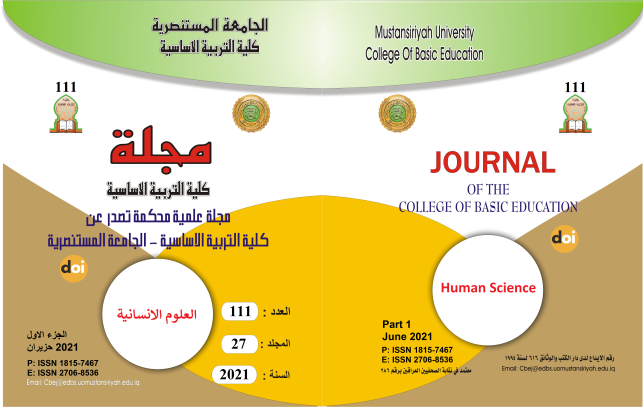العلاقات التجارية بين مصر وبلاد البونت في زمن الأسرة الثامنة عشر في ضوء النصوص الهيروغليفية والنقوش الاثرية
Main Article Content
Abstract
Throughout its political and civilizational history, Egypt's eyes have been ringing to the south of the country, and we mean Nubia or Koch, as it is called in hieroglyphics. Therefore, as soon as the state weakened during the Hexus occupation of Egypt, Nuba and the regions bordering the African coast, including (Puntland), took advantage of its independence, which gained great importance in the souls of egypt's pharaohs because they considered it the home of the Egyptian gods. King Ahmes I, founder of the 18th Egyptian family, succeeded in reuniting Egypt and moving Egypt from the period of weakness, decay and chaos to the era of a sprawling central empire state, until many southern and African regions, including Koch and Punt countries, returned to the capital of the Egyptian state (modern empire).
The importance of writing in this subject is due to the knowledge of the historical roots of Egyptian interest in this country, as well as knowing the form of the trade relationship witnessed in this historical period, and what economic motives that prompted many kings of the eighteenth dynasty and their predecessors from the kings of ancient Egypt to pay attention to the country of Punt because the importance of punt, for Egypt lies almost entirely in its ability to supply the necessary goods to them and that it (Puntland) has been so far from the borders of Egypt that it can not pose any threat Egypt itself is large politically or militaryly, and more importantly, Egypt was largely protected from any potential troubles by the Eastern Desert ; It seems that the Puntland was one of the few areas with which ancient Egypt was in contact and which was seen only in the light of commercial.
Therefore, in our first research we tried to locate and name the Puntland, and in our second research we traced the previous relations of the kings of Egypt with the punt countries relationship down to the kings of the eighteenth dynasty with the inhabitants of the Punt, and then focused on the journey of exploration in the time of Queen Hatshepsut from which we received many texts and inscriptions found by prospectors inside its famous tomb in the sea monastery on the western mainland of Thebes (present-day Luxor). It included the most archaeological texts and scenes that depicted the journey to Puntland and the most important goods and goods brought from it.
Article Details

This work is licensed under a Creative Commons Attribution-ShareAlike 4.0 International License.
